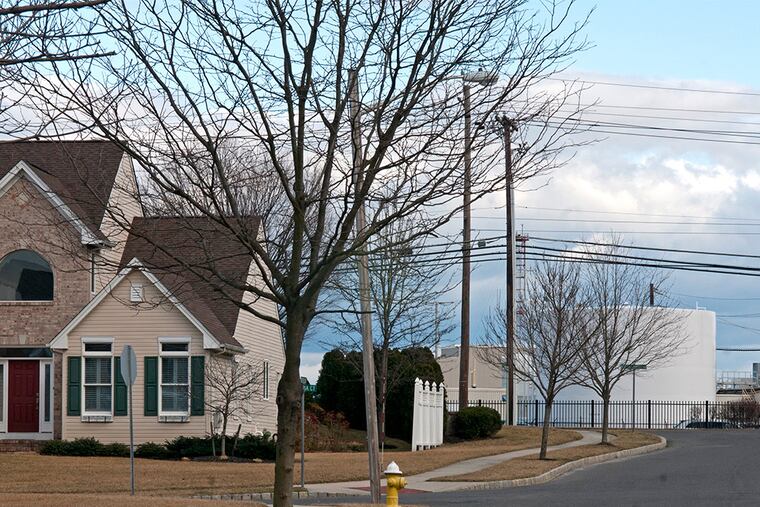Judge dismisses pollution suit targeting Moorestown plant
A federal judge in Camden has dismissed a lawsuit in which two Moorestown couples alleged that their families were exposed to health risks and a loss of property value because of underground contamination caused by a toxic chemical spill at a plant now owned by Lockheed Martin.

A federal judge in Camden has dismissed a lawsuit in which two Moorestown couples alleged that their families were exposed to health risks and a loss of property value because of underground contamination caused by a toxic chemical spill at a plant now owned by Lockheed Martin.
Judge Jerome B. Simandle said no evidence was presented to show that the concentrations of trichloroethylene (TCE) and perchloroethylene (PCE) vapors found in the Wexford neighborhood across from the plant "pose an imminent and substantial endangerment to health or the environment."
Radio Corp. of America, Lockheed Martin's predecessor, had spilled metal-cleaning chemicals about three decades ago, creating contamination that has spread beneath the plant on Borton Landing Road and into the neighborhood, according to documents filed with the state Department of Environmental Protection.
Since then, 58 monitoring wells have been installed in the area to determine the path and level of the pollution.
Michael and Ashley Leese and Jay and Raquel Winkler sued the defense contractor three years ago, citing reports that showed vapors were coming up from the soil into their basements or around the outside of their homes in concentrations higher than acceptable limits.
At the time, several PCE and TCE test results exceeded the standards set by the state Department of Environmental Protection.
But the standards have since changed, and the levels found at the site no longer are considered to be of concern, according to the judge's 43-page decision, released last week.
In addition, he said, "plaintiffs have not provided testimony from a toxicologist or any other expert to aid the court's comprehension of the data or the complicated science at the heart of this case."
Simandle cited scientific studies and a federal Environmental Protection Agency finding that a "person would theoretically have no more than a one-in-a-million increased chance of developing cancer as a direct result of breathing air" continuously, over his or her lifetime, if the vapors rise from soil that contains four micrograms per cubic meter of PCE - an amount found in the neighborhood.
The new standard, set by the EPA, is 470 micrograms per cubic meter.
Lockheed spokesman Keith Little said in an e-mail that the company "is committed to protecting the environment and the health and safety of its neighbors and employees. We work aggressively with regulatory agencies and the communities to remedy the effects of contamination, to ensure we are supporting the community and doing our part to protect the environment. We continue to work with the N.J. Department of Environmental Protection to monitor the area for any potential future concerns."
The DEP plans to monitor the wells around Lockheed until 2030 and has reported that the pollution has not penetrated the water supply.
A DEP spokesman, Robert Considine, said the agency has loosened the standards for some contaminants, tightened them for others, and kept them the same in still other cases, based on EPA recommendations and scientific studies.
Julie LaVan, a Moorestown lawyer who represents the Leeses and Winklers, said no decision had yet been made on whether they will appeal.
"It's an unfortunate situation that there are contaminants and chemicals located on the plaintiffs' properties and neighboring properties," she said, "and the judge decided, based on all the evidence, that the levels don't harm the health of people or the environment."
But she said that the available scientific evidence does not give a complete picture of the potential harm, and that the standards were changed after the suit was filed, which hurt the case.
The lawsuit had asked the judge to order the defense contractor to put a remediation plan in place to contain the contamination, rather than relying only on monitoring, LaVan said.
The suit also had asked for unspecified damages to compensate the families for medical bills, emotional distress and the decline in the property value of their homes. The Leeses have since moved away, while the Winklers have stayed.
Attempts to reach the two couples were unsuccessful. They contended in their suit that their children had refused to eat and their growth rates were slower than normal.
When the couples purchased their new $445,000 homes on Victoria Court in 2003, the builder had disclosed the tainted groundwater, noting it contained TCE. But Orleans Corp., which later declared bankruptcy, had told the buyers the DEP would soon issue a "No Further Action" letter, signaling a cleanup was completed.
The Leeses and Winklers became concerned when the DEP ordered vapor testing in 2008 and found elevated levels of the chemicals, LaVan said.